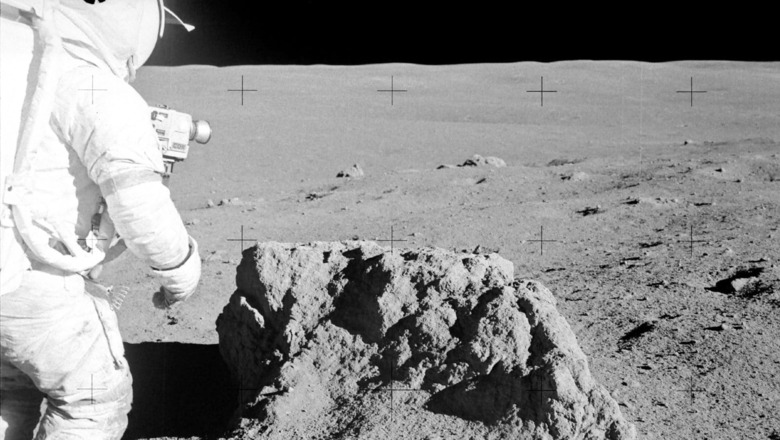
views
Space is vast and lonely. It is perfectly understandable, then, that a little rock would decide to tag along with Earth and the moon on their yearly circumnavigation of the sun.
Said rock, 165 feet long, was discovered in 2016 by Hawaii’s Pan-STARRS 1 asteroid-hunting telescope. This eccentric entity’s Hawaiian name, (469219) Kamoʻoalewa, means “wobbling celestial object.” As it repeatedly loops around Earth, this shy body never gets closer than 9 million miles, which is 38 times farther out than the moon. It gets as distant as 25 million miles away before swinging back around for a closer encounter.
Calculations of its orbital waltz indicate that it began trailing our planet in a relatively stable manner about a century ago, and it will continue to pirouette around Earth for several centuries to come. But where did Kamoʻoalewa come from? It is difficult to study the object with telescopes because of its tiny dimensions and its tendency to hide in the shadows.
But in a paper published Thursday in Communications Earth & Environment, a team of scientists reported that they might have solved the mystery. By observing Kamoʻoalewa during brief moments when it was illuminated by the sun, astronomers worked out that it appears to be made of the same sort of frozen magmatic matter found on the lunar surface.
“My first reaction to the observations in 2019 was that I probably had made a mistake,” said Benjamin Sharkey, a graduate student at the University of Arizona and the study’s lead author.
Kamoʻoalewa was expected to be composed of minerals typically found on asteroids. But additional observations this spring made it clear that “the data didn’t care what we thought,” Sharkey said. Kamoʻoalewa really did resemble an extremely small version of the moon. Upon making that discovery, he said, “I was both excited and confused.”
Based on its orbit and composition, Kamoʻoalewa may be a fragment of the moon, one shorn off by a meteor impact in the past.
Kamoʻoalewa may sound like a miniature moon, but it isn’t. Unlike the moon, which is gravitationally tied to Earth, Kamoʻoalewa is gravitationally bound to the sun. If you suddenly made Earth vanish, Kamoʻoalewa would continue to orbit our star. It is what’s known as a quasi-satellite. Astronomers know of four others lingering in Earth’s vicinity, but Kamoʻoalewa has the most stable orbit.
In April 2017, Kamoʻoalewa was brightly lit when the Earth was between the quasi-satellite and the sun. Astronomers looked at it with two telescopes in Arizona — the Large Binocular Telescope and the Lowell Discovery Telescope — and used the reflected light to identify its minerals. They saw a lot of silicates, minerals found on rocky bodies throughout the solar system — and follow-up observations confirmed that Kamoʻoalewa’s silicates looked a lot like those found on the moon.
It could be a coincidence and so the study’s authors suggested other possible origin stories: Kamoʻoalewa could be a captured asteroid with a similar composition to the moon, or the fragment of an asteroid torn apart by the gravitational pull of the Earth-moon system.
The team’s data, however, “gives more support to a lunar origin,” said Hannah Sargeant, a planetary scientist at the University of Central Florida not involved with the study.
This quasi-satellite may not be alone: The orbits of three other near-Earth objects are similar enough to Kamoʻoalewa’s to suggest they may have all come from the same cataclysmic event. But at present, “there isn’t yet enough evidence to confidently state how these objects originated,” Sargeant said.
“The only way to be sure is to send a spacecraft to this small body,” said Paul Byrne, a planetary scientist at Washington University in St. Louis who was not involved with the study. As it so happens, China’s space agency plans to land on it and collect samples for return to Earth later this decade.
“Until then, we’re left with the possibility that, on our journey through space, we’re accompanied by the remains of a collision that punched a hole in the moon,” Byrne said. “And that’s pretty cool.”
This article originally appeared in The New York Times.
Robin George Andrews c.2021 The New York Times Company
Read all the Latest News here


















Comments
0 comment